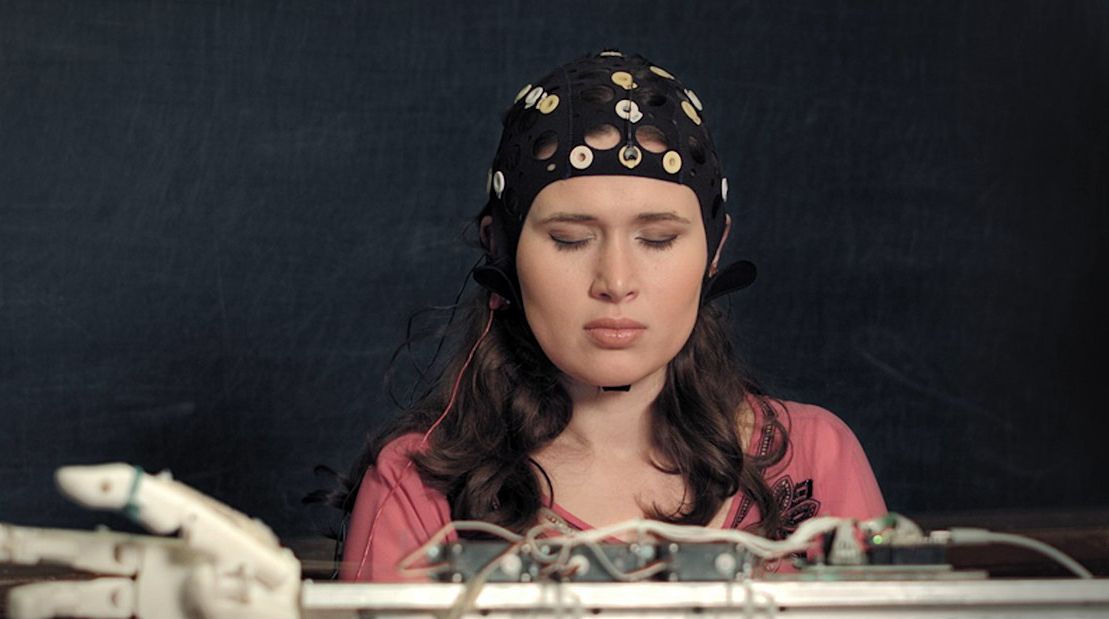Imagine if you could control a robot or play a video game using your mind alone. It sounds like sci-fi, but this is exactly what brain-machine interfaces (BMIs) are already being used for. With applications from entertainment to medicine, BMIs are set to change the world of technology as we know it. But what exactly are they? And how do they work?
This article will cover everything about brain-machine interfaces, including current examples, how they work, and what BMIs could be used for in the future.
What Is a Brain-Machine Interface?

Brain-machine interfaces (BMIs), also known as brain-computer interfaces, are devices that bridge your brain and an external device. They can read human brain activity and communicate that information directly to a computer system. For instance, a BMI could help a patient control a robotic prosthesis. Or, it could enable the user to type into a word processor using only their thoughts.
BMIs can either be invasive or non-invasive. An invasive BMI requires surgery and usually involves placing electrodes directly under the scalp to communicate brain signals more accurately. On the other hand, non-invasive BMIs are placed over the head without surgery and read the electrical activity of your brain. The downside is that much of this activity is dampened by the skull, so non-invasive BMIs are often less powerful.
How Do Brain-Machine Interfaces Work?
When we think, our brains produce electrical signals sent through brain cells (known as neurons). These electrical signals can be picked up and interpreted by medical devices, and in fact, this has been done for decades to diagnose brain conditions.
The two methods to do this are called electroencephalography (EEG) and electromyography (EMG). EEG interprets electrical signals from the brain, while EMG interprets these signals from muscles.
To diagnose conditions of the brain, EEG and EMG readouts are compared to "normal" brain activity, with disease states producing particular patterns in the brain's electrical activity. Now, however, we're able to go even further.
Recent advances mean that we can glean more information from the brain's activity, including emotional states, what movements or actions you are about to perform, and even particular thoughts.
Machine learning algorithms can determine how these particular states "look" (in terms of their electrical activity). These algorithms are given swathes of EEG and EMG data from controlled experiments, and patterns in brain activity are discovered. Brain activity is then monitored and analyzed in real-time to determine specific mental states or actions (such as "move left").
Current Examples of BMIs
There are several current examples of BMIs, many of which are broadly different from each other. Because there's such huge potential for what is possible with BMIs, many are being designed concurrently in completely different fields. Some BMIs are used primarily for medical purposes, to enable disabled people to walk again, or to control devices without the use of hands. Others are designed for gaming and leisure activities.
Cochlear Implants

Cochlear implants aren't what many people would consider when BMIs are mentioned, but they're actually one of the first technologies that linked a user's brain with a machine. They work by providing the sense of sound back to those who are deaf or near-deaf. The implant is surgically placed beneath the user's skin, utilizes a microphone to pick up surrounding sound, then augments and transmits the sound via electric impulses to the user's brain.
Muse
Muse is a "sensing headband" which can detect emotional states in the wearer. The startup company has programs focusing on employee wellness. The employee wears the headband and can manage their stress levels and productivity based on feedback from the headband.
Drone Control
All the way back in 2015, researchers from the University of Florida developed a BMI headband that could let the user control a drone directionally using their mind alone.
Neurable
In 2017, Neurable released a proof-of-concept game which was a BMI-controlled escape room. Players put on a VR headset and escaped the room using their thoughts only. Neurable plans to develop products that enable you to control your smartphone (for instance, skipping or pausing songs) via your mind.
Neuralink
Elon Musk's famous company Neuralink is an example of an invasive BMI. Using surgically implanted "threads," Neuralink aims to connect the brain to a computer through ultra-high bandwidth means. The ultimate goal of Neuralink is to help humans outpace traditional artificial intelligence systems. Neuralink has already been tested (famously) in a monkey patient, and the monkey was able to play Pong purely by thinking.
Other examples of currently in-development BMIs include Kernel, NextMind, Neurosity, and Nectome.
What Will BMIs Be Used For In the Future?
One application of BMIs is to provide feedback to the user about their mental states. For instance, a BMI could detect high levels of drowsiness or inattention and provide warnings in high-risk environments, such as driving or using dangerous machinery. A BMI could also be used to regulate emotions or even reduce pain, which has several potential uses for the military.
BMIs also have dozens of potential applications in medicine. For instance, they could be used for amputees to control advanced prosthetics or treat neurological conditions like Alzheimer's or Parkinson's disease.
In the consumer space, BMIs could be used for myriad things. Users could control their smart homes with their minds, turning lights on and off, switching channels, or even having playlists automatically generated based on their moods. Undoubtedly, there will be a huge space for BMIs in virtual reality and other games where using controllers is one of the final barriers to full immersion.
BMIs: Mind Control
Brain-machine interfaces will undoubtedly be around in the future, in more or less the exact way they are depicted in sci-fi movies. In fact, many are already commercially available which have capabilities that can far extend the human brain. One day, you will no longer need to press buttons or type commands. You'll be able to walk into your house, turn lights on and off, and play games in virtual reality without using your hands at all.